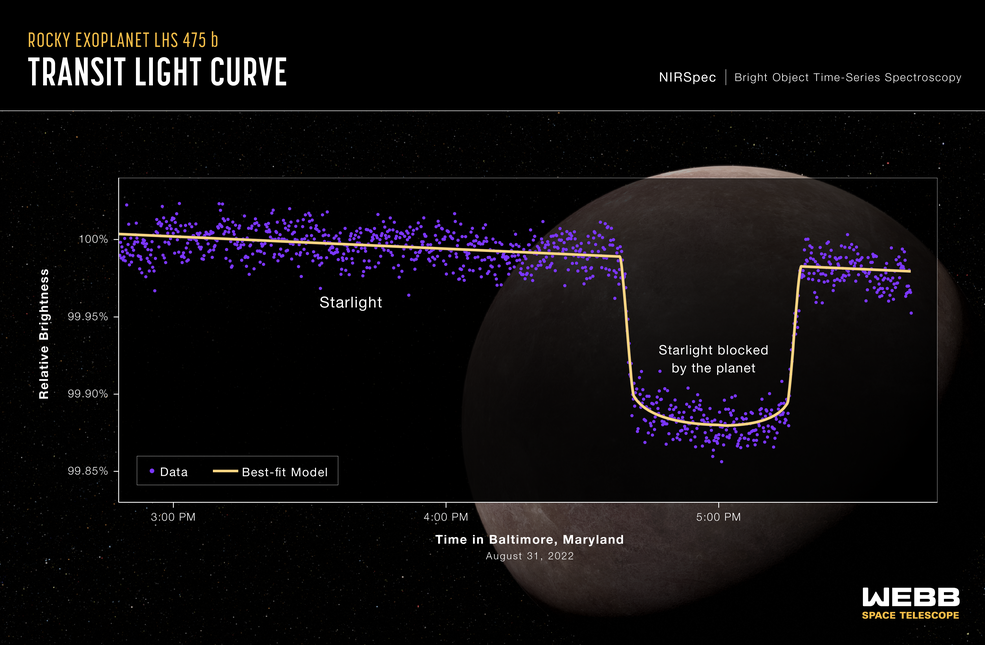Every end of week, an image that made the news or caught our attention. On January 11, Nasa announced a new discovery of its fantastic space telescope.
Comparable in size to Earth
The James Webb Space Telescope of Nasa, entering its second year of service from the Lagrange Point L2 (reached on 24 January 2022), has confirmed the existence of a rocky exoplanet, LHS 475 b, located 41 light-years away in the southern hemisphere constellation Octant.
The planet, which had been detected by Nasa's exoplanet hunter Tess (Transiting Exoplanet Survey Satellite, launched in April 2018), has a diameter equivalent to that of Earth (99 percent), and orbits its star in just two days.
Only two transits were needed for this confirmation, so accurate are the data from the space telescope's NIRSpec (Near-InfraRed Spectrograph).
The mission is just getting started
The research team that confirmed the discovery is led by Kevin Stevenson and Jacob Lustig-Yaeger, two members of the Johns Hopkins University Applied Physics Laboratory in Laurel, Maryland.
" These first observational results of an Earth-sized rocky planet open the door to many future opportunities to study the atmospheres of rocky planets with Webb, said Mark Clampin, director of Nasa's Astrophysics Division. Webb brings us closer and closer to a new understanding of Earth-like worlds outside our solar system, and the mission is just getting started. "
Découvrez cet article sur Air&Cosmos

